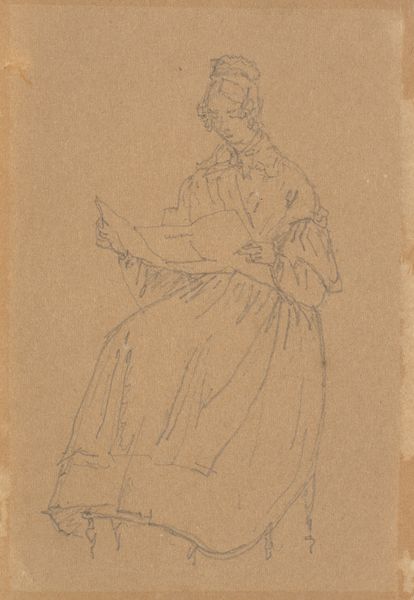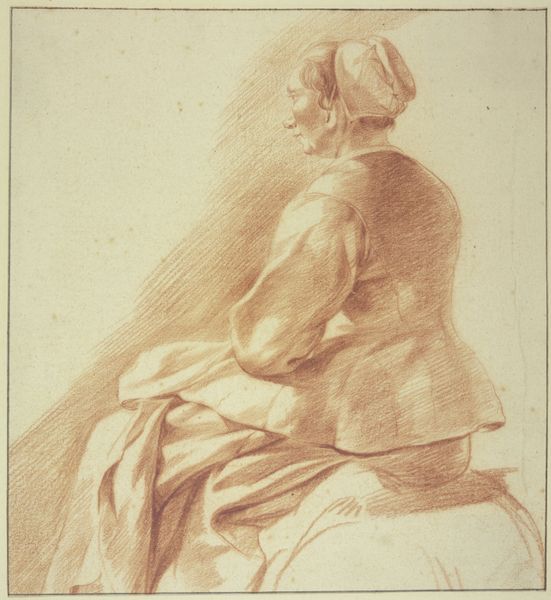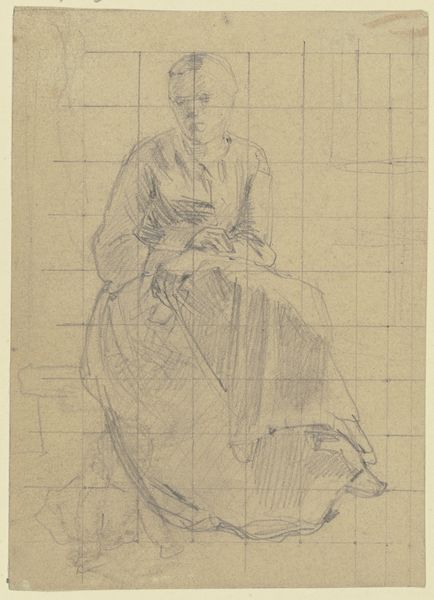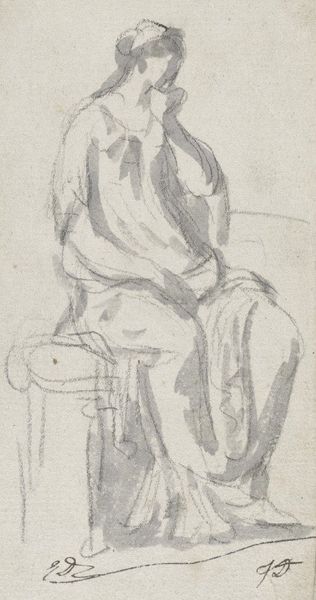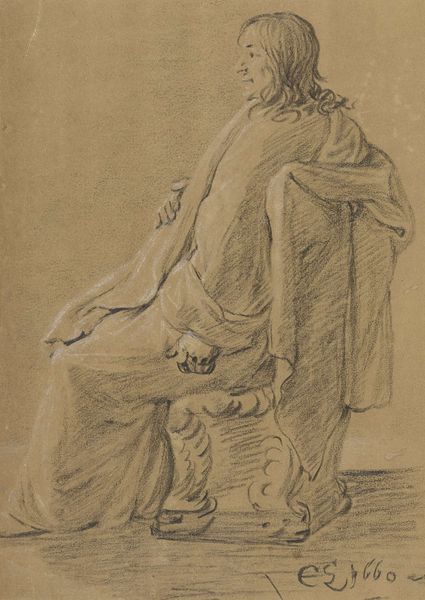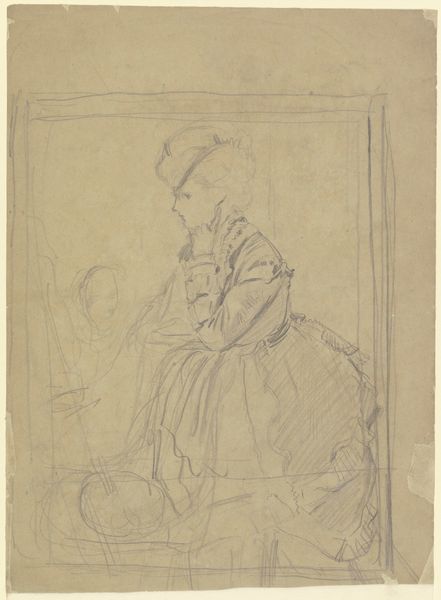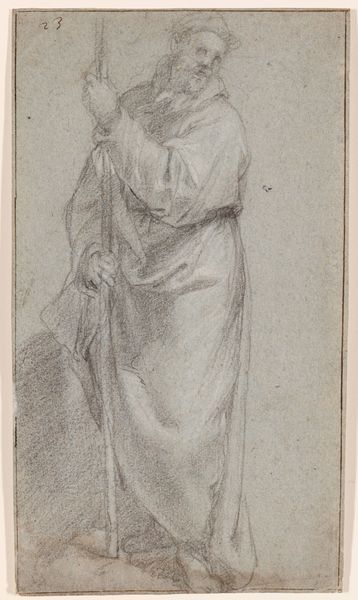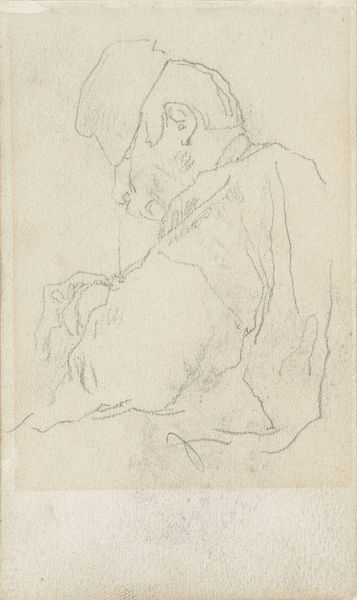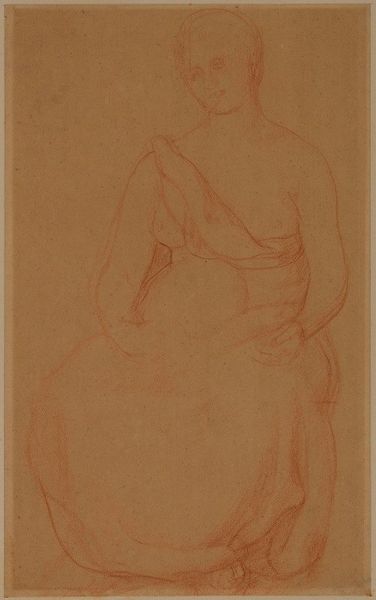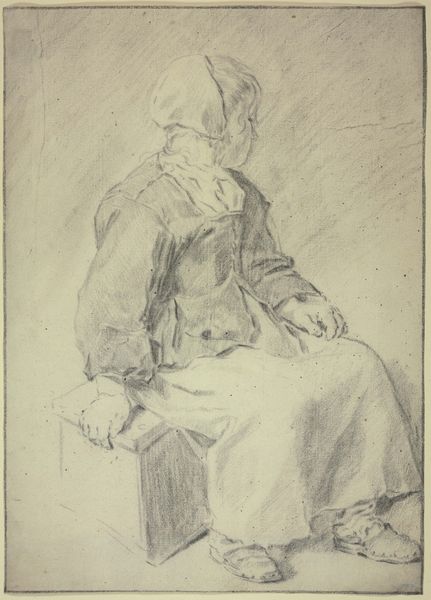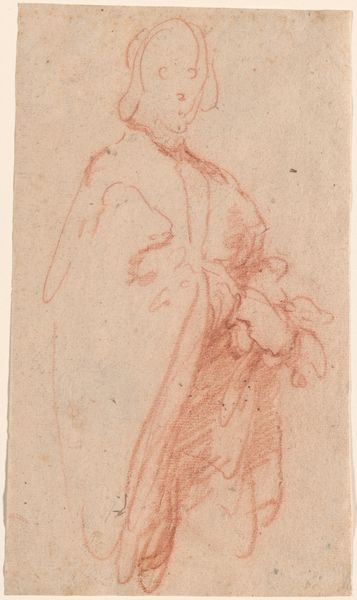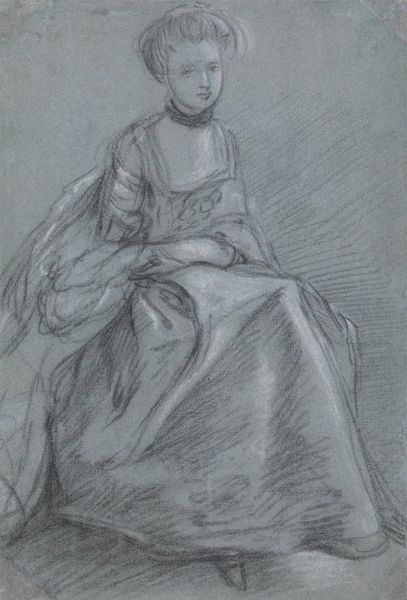
drawing, pencil
portrait
drawing
neoclacissism
pencil
academic-art
Dimensions: 416 mm (height) x 282 mm (width) (bladmaal)
Editor: Here we have Jens Juel’s pencil drawing "Studie til fru Juels figur," made sometime between 1789 and 1792. I'm struck by its ethereal quality; it feels almost like a ghost. What stands out to you when you look at this preliminary sketch? Curator: The subject being Juel's wife highlights the art world's reliance on social connections and familial structures during that era. Who had access to artistic representation, and on whose terms? Consider how portraiture served to solidify social status, and marriage was, for a woman, virtually the only pathway. Does that awareness color our viewing experience? Editor: Absolutely, knowing it's his wife changes how I see it. There’s a vulnerability here, perhaps amplified by the medium of drawing itself. Do you think her pose is typical for the time? Curator: It is, and it isn't. The Neoclassical influence is undeniable - the idealized form and serene countenance. However, her slightly lowered gaze and clasped hands hint at a more private, internal world. How does this balance between public presentation and private emotion reflect the role of women in late 18th-century Danish society? Think about who was commissioning and consuming these images. Editor: So, it’s a public-facing image of private life, reinforcing social order. I’d not considered that connection between the personal and the political. Curator: Precisely. These images weren’t just about capturing a likeness; they were active participants in constructing and maintaining social norms. Examining art is a way to unpick assumptions we would not think about today, which had considerable impacts then. Editor: I see the artwork in a different light now. The social history gives this image of his wife a much more profound significance than I initially thought.
Comments
No comments
Be the first to comment and join the conversation on the ultimate creative platform.
